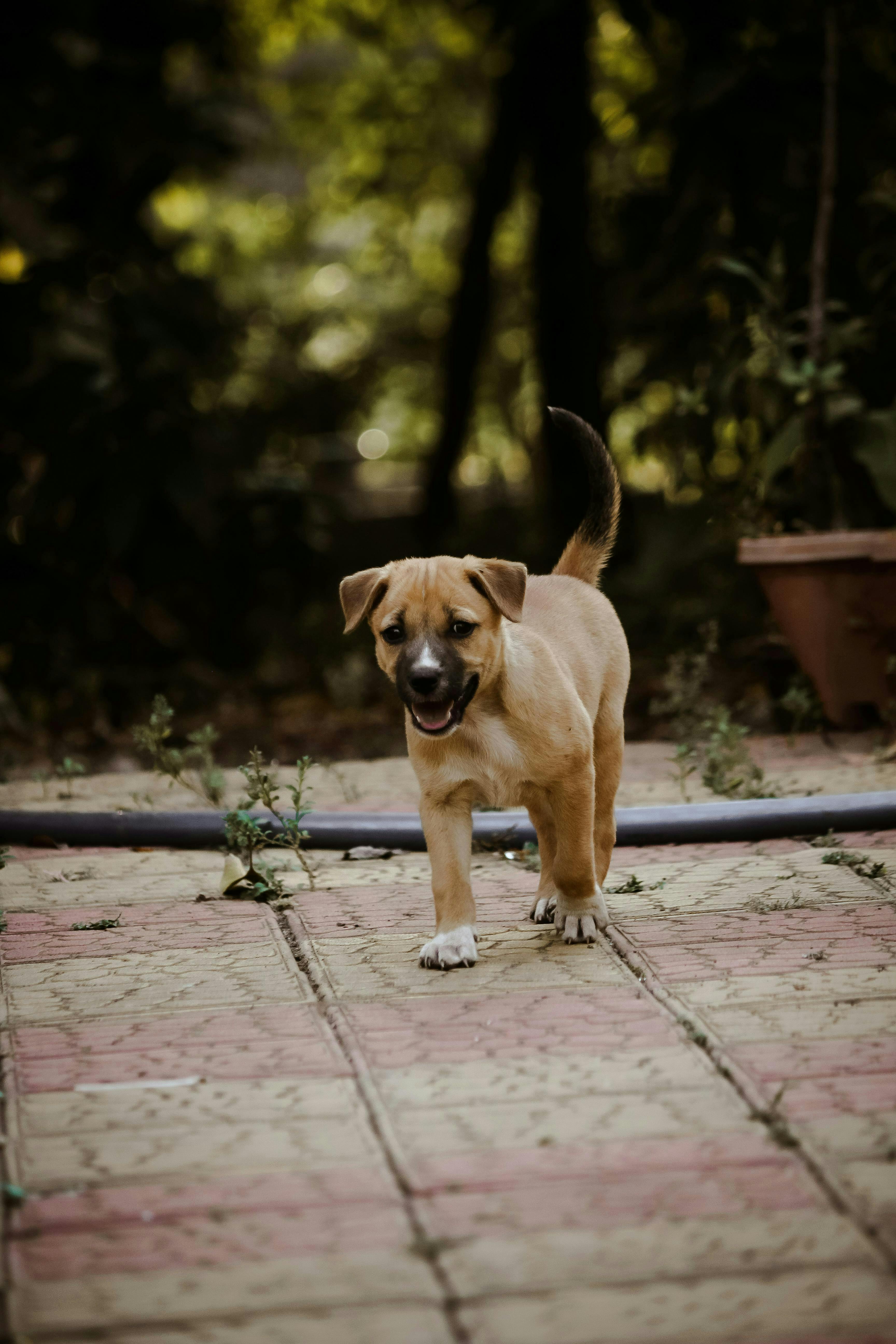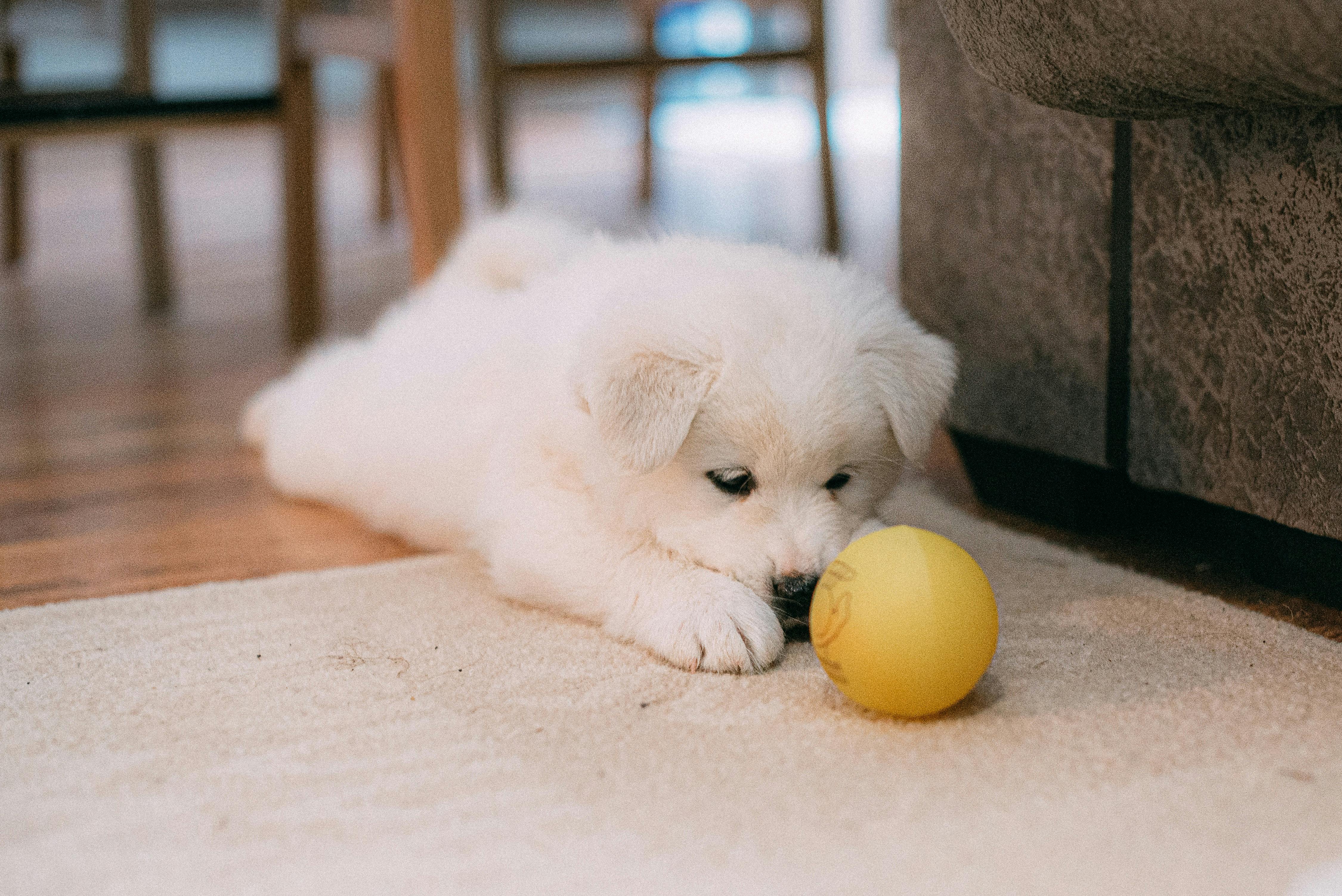The Ultimate Guide to Dog Enrichment: What it is and How it Makes Your Dog Happier
Training Tips | By: TAYLOR WYLLIE, KPA CTP | Dec 06, 2023
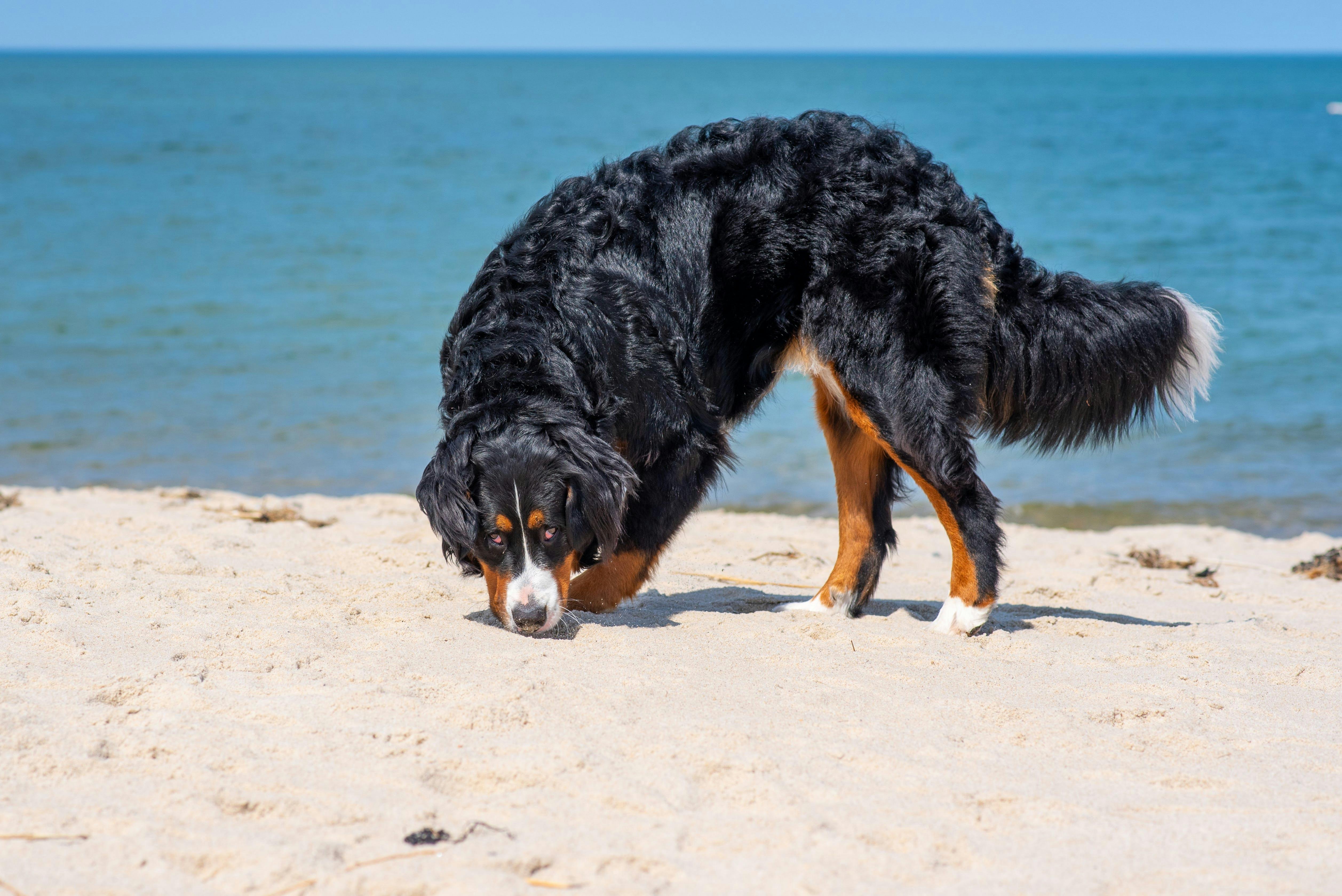
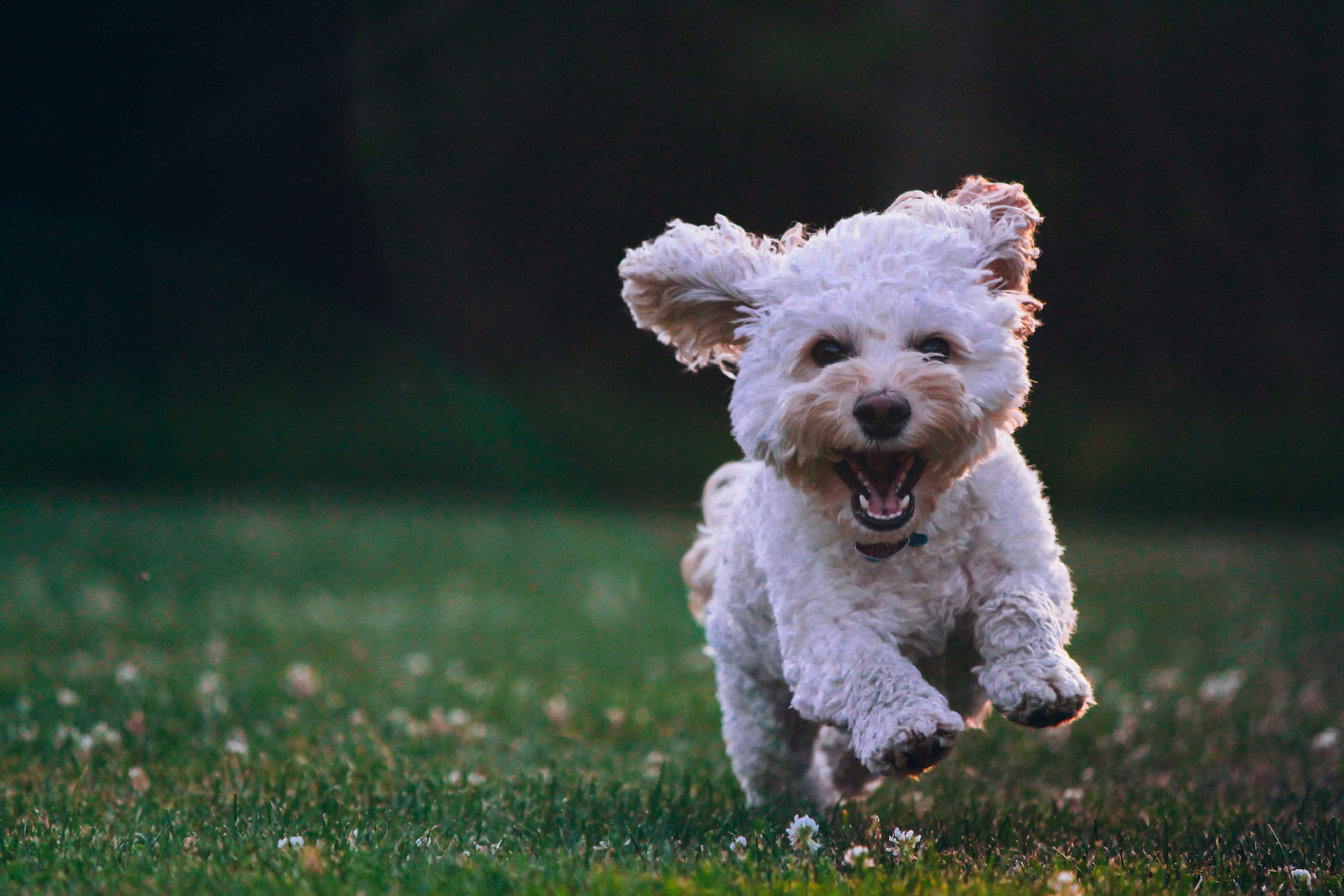
Unlock 10 Expert Puppy Training Tips!
Sign up with your email and receive a free video guide to transform your puppy into a well-behaved companion
Disclosure: some of the links in this blog are affiliate links. We receive a small commission for purchases made through these links at no extra cost to you. This helps support us and allows us to continue to put out free content to help you and your pup. Thanks for your support!
Canine enrichment is a buzzy topic. It’s everywhere these days—I’ve seen it all over my Instagram feed, in the aisles of my favorite pet store, and I once had a conversation with a grocery store clerk about it. (I can and do talk about enrichment with anyone and everyone. I swear, I’m fun at parties . . .).
But dog enrichment is more than a hot trend and fun conversation piece—it’s the key to providing a fulfilling and stimulating life for our dogs.
And it may be more complex than you think (you could write an entire book on enrichment. Oh wait, there already is one.)
In this comprehensive guide, we'll delve into the importance of enrichment for our pets, explore various enrichment activities, and discover how they contribute to our pets’ overall well-being.
What is Dog Enrichment?
Before we go any further, let’s all get on the same page about what enrichment is.
To borrow the wisdom of dog behaviorists Allie Bender, CDBC and Emily Strong, CDBC, enrichment involves structuring our dogs’ environment to meet their basic needs. Needs that include physical exercise, safety, social time, dog-will-be-dog-behaviors (not the scientific term), problem solving, calming activities / rest and sleep, and play.
Note that I said needs.
Enrichment isn’t an optional part of dog ownership. In fact, as the folks with the opposable thumbs in the relationship, we owe it to our dogs to provide them a satisfying and fulfilling life.
Now, I wish I could give you a simple equation here. Something like two parts fetch plus one tablespoon of foraging multiplied by sixteen-hours of sleep equals one enriched dog. But all dogs are unique individuals. What works for one dog will not work for another dog—and this is true amongst breeds as well. Dog personalities are a complex blend of breed, genetics, environment, history, and perhaps some other factors too. So, you can’t necessarily devise an enrichment plan simply based on your dog’s breed, though that can point you in the right direction.
Let’s take a closer look at all of the aforementioned enrichment categories (these are based on the categories in Canine Enrichment for the Real WorldCanine Enrichment for the Real World.)
Physical exercise
Most people who have dogs understand that dogs have basic physical needs. But exercise might look different than what comes to your mind.
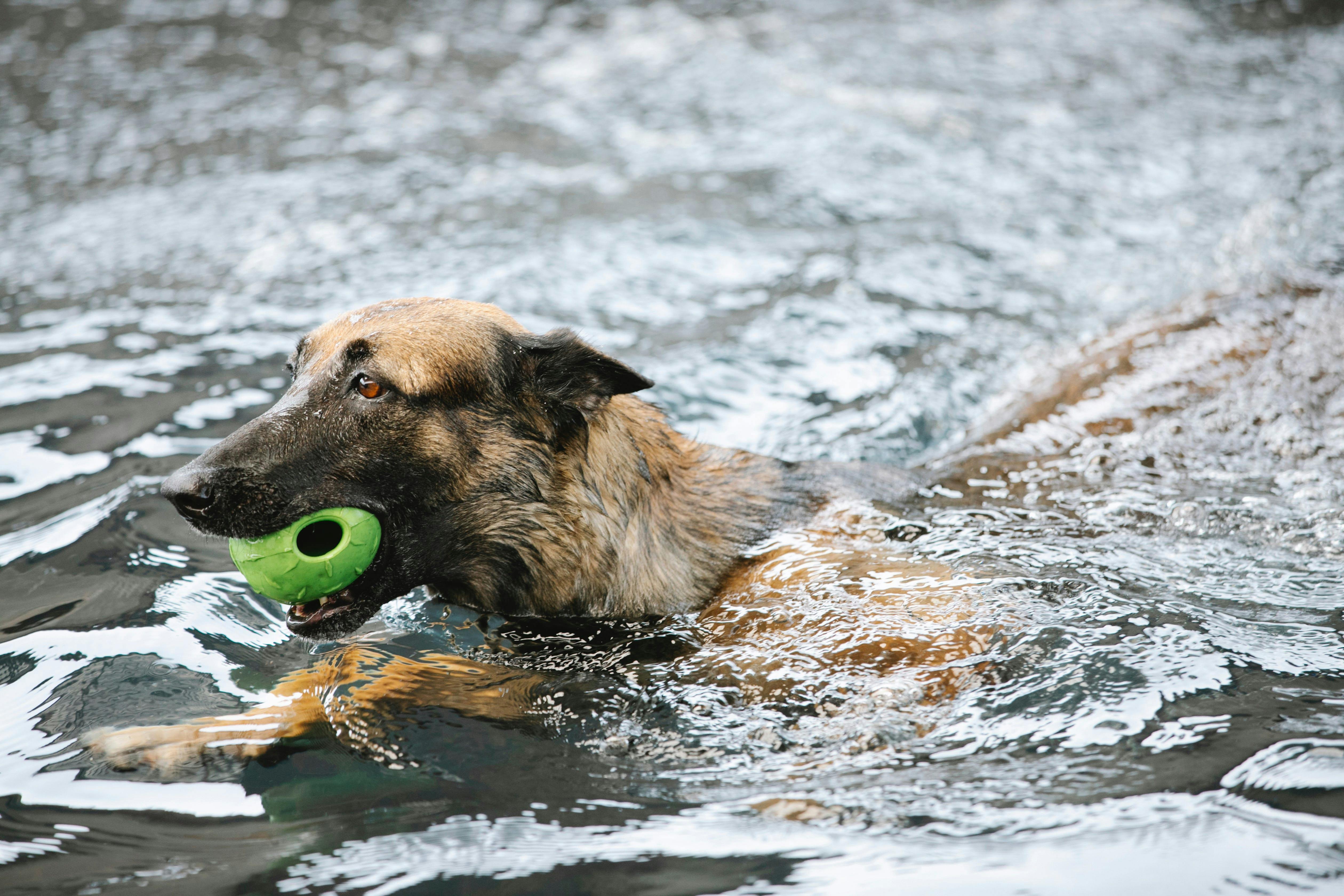
From my experience, people tend to think of high-intensity games of fetch or walks as the primary forms of exercise for dogs. In reality, a high-arousal game of fetch can be tough on dogs, especially if they are not allowed to complete the predatory sequence and calm the adrenaline rush chasing after a ball creates (I don’t have room to explore this topic in detail here, but read more about predation on Simone Mueller’s website.) And, for many dogs, daily walks are simply not enough.
It’s important to keep your dog’s preferences in mind. When I first adopted my lab-terrier mix, Scott, I dreamed that he would become a frisbee dog. He didn’t like frisbee. I didn’t care. I wanted to make him learn to love it. Long story short, I gave up on that dream and started exercising him in the way he likes it. Namely, long walks or hikes, games of tug, chasing a flirt pole, and occasionally a version of fetch that involves tugging and chasing and letting him rip into his toy.
I’m not saying it’s impossible to encourage your dog to love an activity they’re not predisposed to loving. Of course it is. But it might take more effort and time than you’d prefer. For me, I’d rather spend that time on other training while meeting my dog where he’s at when it comes to exercise.
Here are different forms of physical exercise you can try with your dog:
- Swimming
- Hiking
- Using a flirt pole
- Play with trusted dog friends
- Frisbee
- Fetch
- Tug
- Dog sports, such as agility or treibball
- Playing mat-to-mat (encouraging your dog to run from one spot to another using food. Just ensure your dog's not running between these spots on tile or hardwood floors, which can cause them to slip).
Safety
Of course, it’s our job to provide a safe environment for our dogs. Most people intuitively grasp this one. That said, this category also involves the perception of safety.
I will use the example of my own dog, Scott. My husband and I adopted Scott without any knowledge of his background, but he came to us afraid of almost everything. He feared bicycles, skateboarders, loud noises, crates, cars, other dogs, and people. He responded to those fears with big reactions, which made it harder for us to realize that he was afraid (we thought he was maybe broken?). Inadvertently, we were not providing a safe environment for our dog because—even though it was objectively safe—he did not feel safe.
Since then, we’ve helped him with those anxieties with a combination of management, behavioral modification, and medication. Of course, he still feels fear. We can’t control everything. But we’ve provided him as safe of a space as is possible. If your dog is fearful or reactive, it’s important to work on decreasing that fear whether on your own or by reaching out to a qualified professional. (We also have a self-paced online reactive dog course.)
When it comes to safety, we must also talk about training techniques. Some old-fashioned trainers advise people to use aversive tools to train their dogs into obeying commands. These tools range from e-collars to jiggling jars of pennies, but they all work on the same principle of operant conditioning—behaviors that are punished will decrease in frequency in that context. In other words, dogs are less likely to repeat behaviors if they’re punished for them.
However, punishments only work because they are punishing. This may sound basic, but those old-fashioned trainers try to minimize this fact. A punishment will not work unless it causes a dog to be uncomfortable or in pain. Unfortunately, these punishments tend to create a sense of fear in our dogs (the opposite of safety!). These techniques are also associated with increased aggressive behaviors and/or increases in avoidance behaviors, both of which stem from—you guessed it—fear.
Luckily, we have positive reinforcement training that works on a different principle of operant conditioning: behaviors reinforced in a specific context will increase in frequency in that context. This is training without fear and, thus, providing that sense of safety and security our dogs deserve. (While also mentally exercising them, more on that below.)
Social Time
Dogs aren’t the pack animals that popular culture loves them to be. They don’t want to be alpha, but they do want to be social.
Most dogs will benefit from time with other dogs, particularly friends of theirs. If your dog is a social butterfly, they might even enjoy time at doggy daycares or dog parks. Note that not all doggy daycares and dog parks are created equal. You want to take your dog to wide open spaces and avoid overcrowding, which could breed conflict. Avoid bringing toys or high-value food, which may trigger resource guarding and go to places that separate dogs by size.
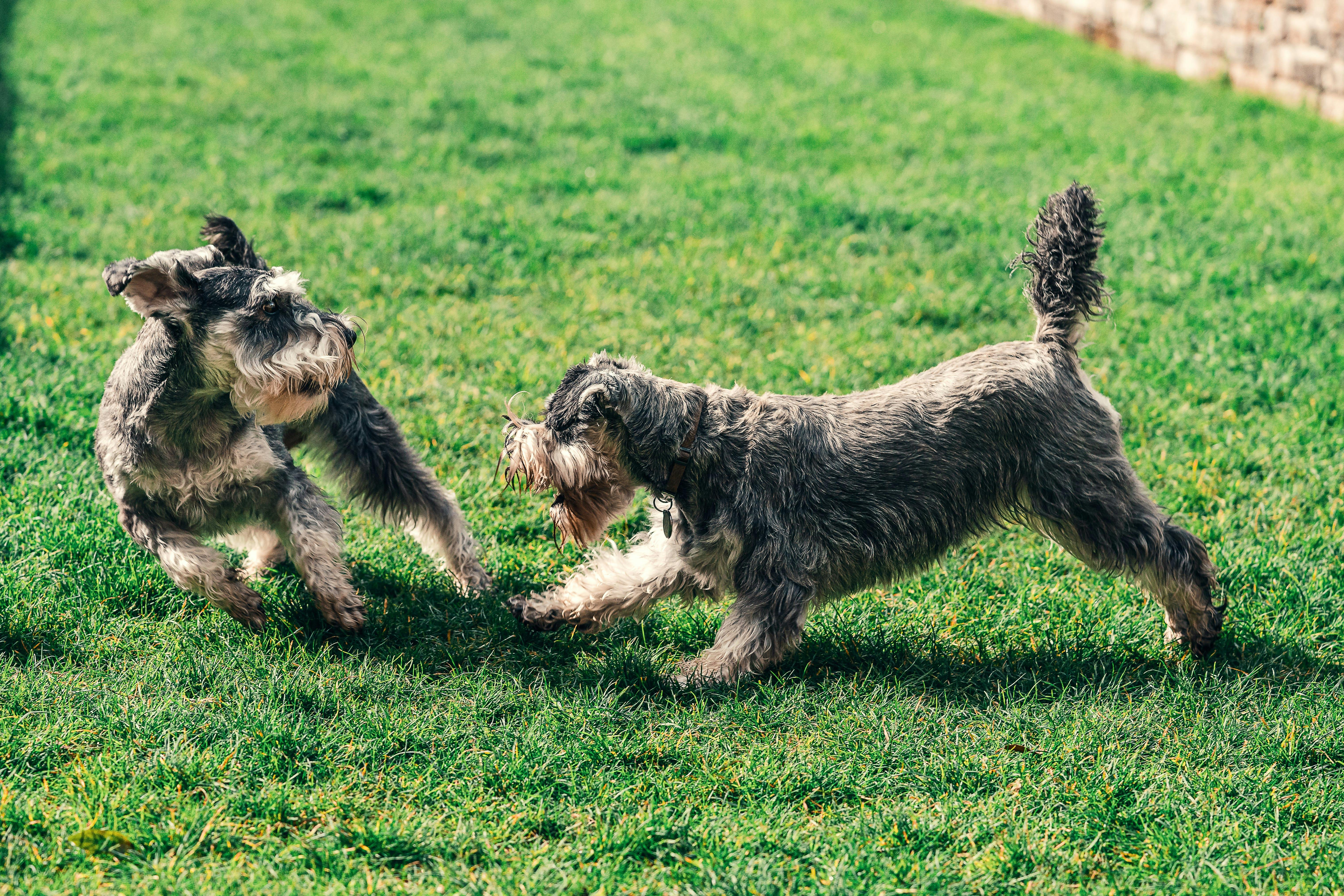
Keep in mind that not every dog is a social butterfly. Some dogs are more “introverted” and would prefer to run around with one or two friends instead of a bunch of strangers. Think of doggy daycares or dog parks like the Vegas strip. It’s not for everyone. Pay close attention to your dog’s body language to see if they are enjoying themselves or not.
Note that this specific category can be more complex if you’re dealing with a fearful dog or a dog who does not enjoy other dogs. My own dog does not have any dog friends at the moment due to his ongoing fear of other dogs—and that’s okay.
Dogs also benefit from social time with humans, which is a win-win for everyone. After all, you probably decided to get a dog in order to spend time with them. But—a pattern you may have picked up on by now—all dogs are different in regards to how social they would like to be with humans. You may have a dog that enjoys going to coffee shops and soliciting attention from every person there or you may have a dog that would rather only interact with their trusted human friends. Meet your dog where they’re at, instead of trying to force them into being the dog you wish they were.
Dogs-will-be-Dogs Behaviors
Dogs aren’t human. They are dogs. Which means their needs differ from ours and, sometimes, our differing needs can conflict with one another. This frequently happens with what I affectionately call dogs-will-be-dogs behaviors.
Dogs have instinctive desires, including the need to chew, sniff, forage (search for food), dig and even vocalize. You may have seen this in your dog when he chews on your couch cushions, spends twenty minutes sniffing one bush, counter surfs and nabs that slice of pizza you just heated up for yourself, digs up your garden, and barks. All annoying behaviors when dogs seek them out on their own. However, the likelihood of your needs clashing reduces if you provide appropriate outlets for your dog to, well, be a dog.
I used to believe that if I encouraged my dog to engage in any of the above behaviors that would make them do that behavior even more. This is a myth. Dogs will do these behaviors regardless of what you do because it’s in their genetic code. You can’t stop them from being a dog, but you can satisfy these underlying needs to prevent them from doing so destructively.
Chewing
You can provide your dog with appropriate things to chew on. If your dog starts chewing on something inappropriate, simply redirect them to what they are allowed to chew on. Make a note of what they tend to chew and try to mimic that in their toys. Do they prefer plush and soft textures? Or harder and stiff objects?
Sniffing
You probably already know that dogs have excellent senses of smell and that they enjoy using that sense. After all, it’s how they “see” the world. Since it’s not how us humans get around, it can be hard to have the patience to let our dogs use their sniffer. But it’s important that we do. You can walk your dog on a long leash—I suggest 12 to 15 ft—letting them follow their nose where it takes them, or play games that rely on your dog’s sense of smell to win (more on those later!).
Foraging
Foraging is the act of seeking out or working to obtain food. It’s a natural dog behavior that is extremely mentally satisfying for our canine friends. When it comes to food, multiple studies have found that living beings have an innate need to work for their food. When given the choice, animals choose to work for their meal over receiving that same meal “for free” (with a few exceptions). So, encouraging our dogs to seek out and work for food meets one of their fundamental needs.
This desire to forage is why your dog will nose through your trash or put his paws on your counter if he smells something yummy.
Digging
Terriers are—rather famously—known as the diggers, but it’s not exclusive to them. I’ve seen several client dogs, ranging in breed and size, who love to rake their claws through the dirt. Now, there are a myriad of reasons that dogs dig. They might be looking to cool off, warm up, or dig up some prey. Or because they simply want to.
My dog likes to dig. Initially, he wanted to dig up every inch of the backyard. Instead of yelling at him in an effort to stop him, I recognized that he gets lots of satisfaction from the practice. So, I chose a spot where it’s appropriate for him to dig. I encouraged him to dig there and whenever he tried to dig in a different spot I redirected him to his hole. Now, when he gets that digging urge, he’ll go to his designated spot and leave the rest of our backyard alone.
Vocalizing
Dogs bark for a variety of reasons, ranging from fear to attention-seeking (multiple studies—including one from Dr. Sophia Yin—have found that barking is an important communication tool for dogs) . Sometimes, dogs also bark because it’s enjoyable. My dog certainly enjoys barking. I know it’s his “excited” bark because it has a distinctive pattern—a rooooot-rooo. I encourage this behavior by roooooot-rooing back. And I see no reason to suppress this type of bark when he feels the need to express it.
Problem Solving
Studies have suggested dogs may enjoy problem solving. That is, they experience that same thrill of completing a difficult task as humans do. These tasks may involve finding food, performing tricks, doing puzzles, or any other activity where they have to use their brains to solve a problem.
Calming Activities, Rest, and Sleep
Helping our dogs decrease their arousal levels and reach a state of calm is a necessary part of dog ownership. Some dogs struggle more than others. Mat training or programs like the Relaxation Protocol, can help chill a dog out. You can also help stimulate calm by providing a place for your dog that is theirs to relax in, a place that will always be free of annoyances, including from people or other animals. This space is frequently a crate, but can be a mat, a bed, or anything similar. Watch the video below to see my dog relaxing on his mat despite the usually-stressful-for-him scenario of us moving into a new home.
Chewing and licking are also calming activities for dogs and, thus, they should be given the opportunity to engage in them.
Dogs need 17-ish hours of sleep per day and are crepuscular, meaning they are most active during the morning and evening hours. They should be given opportunities to rest and sleep away from lots of activity and noise during the day for naps.
Play
Another rather intuitive-to-us need our dogs all have is the need to play. (Actually this need is shared across multiple species, including humans.) Dogs may enjoy playing with other dogs, humans, or by themselves. (At around 2-3 years of age, dogs naturally play less and become pickier about who they would like to play with.) Research indicates that play can help dogs learn how to cope in stressful situations. Dr. Amy Cook even devised a behavioral modification plan to help anxious dogs feel better about their triggers, aptly called The Play Way. There are multiple ways to play with your dog—you don't have to stick to a game of ball or tug. Watch the video below to see what social play looks like with my dog.
As you may have already realized, the categories of enrichment overlap significantly. You can provide mental stimulation while providing physical exercise while allowing your dog to be a dog. This is obviously great, allowing us to get more bang for our buck.
Why Does Dog Enrichment Matter?
The simple answer is that all living beings deserve to have their needs met. As we discussed above, enriching our dogs is meeting their intrinsic needs.
From a more anthropocentric point-of-view, dogs who lack structured enrichment will seek it out for themselves. This can lead to destructive behaviors like chewing your shoes, excessive barking or digging, jumping, or counter-surfing.
One of the first things I address when meeting with new clients is their dog’s enrichment. This is because “naughty” behaviors can be greatly diminished or even eliminated with the correct enrichment plan.
Finally, reactive or fearful dogs can greatly benefit from increased enrichment in all aspects, which can increase their confidence and help reduce stress.
Dog Enrichment Ideas
Alright, time for the fun stuff. Let’s discuss how to enrich your dog. The following activities focus on mental enrichment, problem solving, and foraging. (Suggestions regarding the other categories of enrichment are given beneath their respective headings.)
This list is not comprehensive. Once you understand what is enriching to your dog, you can make up your own enrichment games and activities. The possibilities are as endless as your imagination.
And, remember, every dog is an individual. If you try an activity with your dog and they do not appreciate it—don’t give up on enrichment altogether. Simply try a different activity and see what happens.
Finally, think about enrichment like teaching a middle school student math—it’s important to work within their skill level. We wouldn’t expect that student to succeed at calculus (it’s too difficult!) nor would we expect them to stay engaged when teaching simple addition (it’s too boring!). Same goes for dogs.
If I had a nickel for every time I heard a client (or family member or friend!) say that their dog is “too dumb” for an enrichment activity, I’d be rich. Your dog isn’t dumb, they just haven’t done these problem-solving games before. Start easy and work your way up.
Finally, keep safety in mind as you engage in these activities with your dog. Watch them interact with any props involved to ensure they use it safely.
Without further ado, here are enrichment ideas:
-Take some—not all—of your dog’s breakfast or dinner and scatter it outside for them to find and eat. But wait! If you’ve never done this before, your dog will likely need help. Search with them—giving them lots of praise whenever they find a piece of kibble. If you find a piece of kibble, point it out to them and shower them with praise when they get it.
-Scatter treats throughout a room inside your home, varying if they are on the floor or on objects
-Put kibble or treats inside a toilet paper roll. Fold down one side of it and give it to your dog. (Only do this if your dog will not ingest the cardboard.) Once they can get the food with one side open, close both sides. Once they become efficient at getting the food with both sides closed, use multiple toilet paper rolls with food only in some of them. Your dog will have to sniff out which ones are worth destroying. Once they become efficient at this, hide the toilet paper rolls in a room or throughout your house.
-Buy or make a snuffle mat
-Put kibble, treats, or wet food in a cupcake pan—cover the holes with balls—and encourage your dog to get the food beneath.
-Feed your dog dinner inside a cardboard box. Start off easy—simply put their food on the floor and put a cardboard box over it. Work your way up to stuffing paper inside the cardboard box, closing the box, taping the box closed, hiding the box, etc.
-Put food under a towel. Once they get that, roll the food in the towel. Then you can roll the towel and tie it in a knot.
-Toss a treat—one at a time—and have your dog chase, find, and eat it.
-Teach your dog tricks using positive reinforcement training techniques. This works because your dog has to problem solve to figure out what they have to do in order to get a food reward. And you can show off to all your friends when your dog can jump into your arms, “tell you a secret” (i.e. put their nose to your ear like they are whispering in it), or wave (see video below).
-Try nose work.
-Take sniffaris. These are walks for the sole purpose of letting your dog sniff. Use a long leash—12 or 15 feet—and trail your dog, letting them take you where they would like to go (as long as it’s safe and legal). Best done at a park, in nature, or—if you have a dog that can’t be around other dogs or people—in big, empty parking lots.
Dog Enrichment Toys
There are numerous toys you can buy that are designed to enrich your dog. Again, this list isn’t comprehensive, but contains my favorite options on the market right now.
- Food puzzles from Nina Ottosson
- Kong wobbler or other weebles
- Snuffle Mats
- Digestible chews
- Non-digestible chews
- Classic Kong
- Kong Duratreat Ring
- Lickimats
- Woof Pupsicle
- Snout Roller
Dog Enrichment Tips
You don’t need to dedicate your entire life to providing your dog enrichment. You can simply tweak habits you already have with your dog to be more enriching. For example, instead of feeding your dog their dinner in a boring ole food bowl, give them their dinner in a cardboard box. Instead of taking your evening walk on a 6 foot leash in the neighborhood, go to the local park and walk your dog on a long leash. You get the idea.
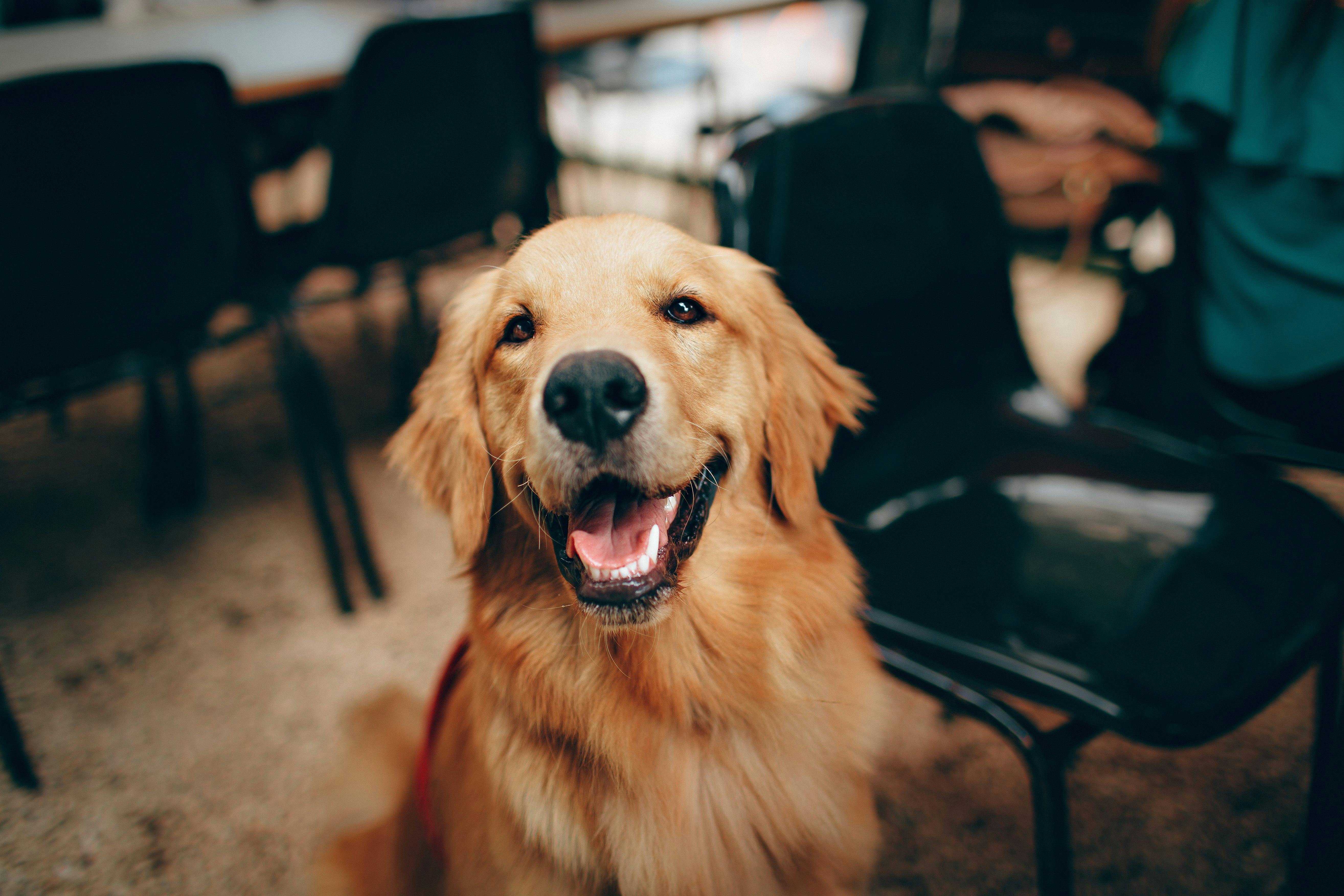
Keep safety in mind—monitor your dog while they engage with a new product the first few times. If they seem to be using it in an unsafe way—perhaps ingesting inedible objects—don’t use that product again. Ensure you are aware of any allergies your dog may have or any medical issues that may make it dangerous for them to engage in a certain activity.
If your dog shows any type of aggressive behavior toward you or another pet in the home in the presence of food or food toys, please reach out to a qualified professional. This is called resource guarding and it’s something dog behaviorists can help you with.
If your dog doesn’t seem engaged in an activity you provide for them:
• Try to determine if you are at your dog’s sweet spot. Maybe it’s too easy. Or maybe it’s too hard and they could use some help.
• Try different kinds of treats or food. Experiment here!
• Different dogs prefer different types of enrichment activities, experiment to see what your dog prefers
• Keep the environment in mind. Your dog may be too distracted or fearful to engage in the activity you’re providing
A (Realistic) Example of an Enrichment Plan
I thought it might be helpful to share what I do with my dog in terms of enrichment.
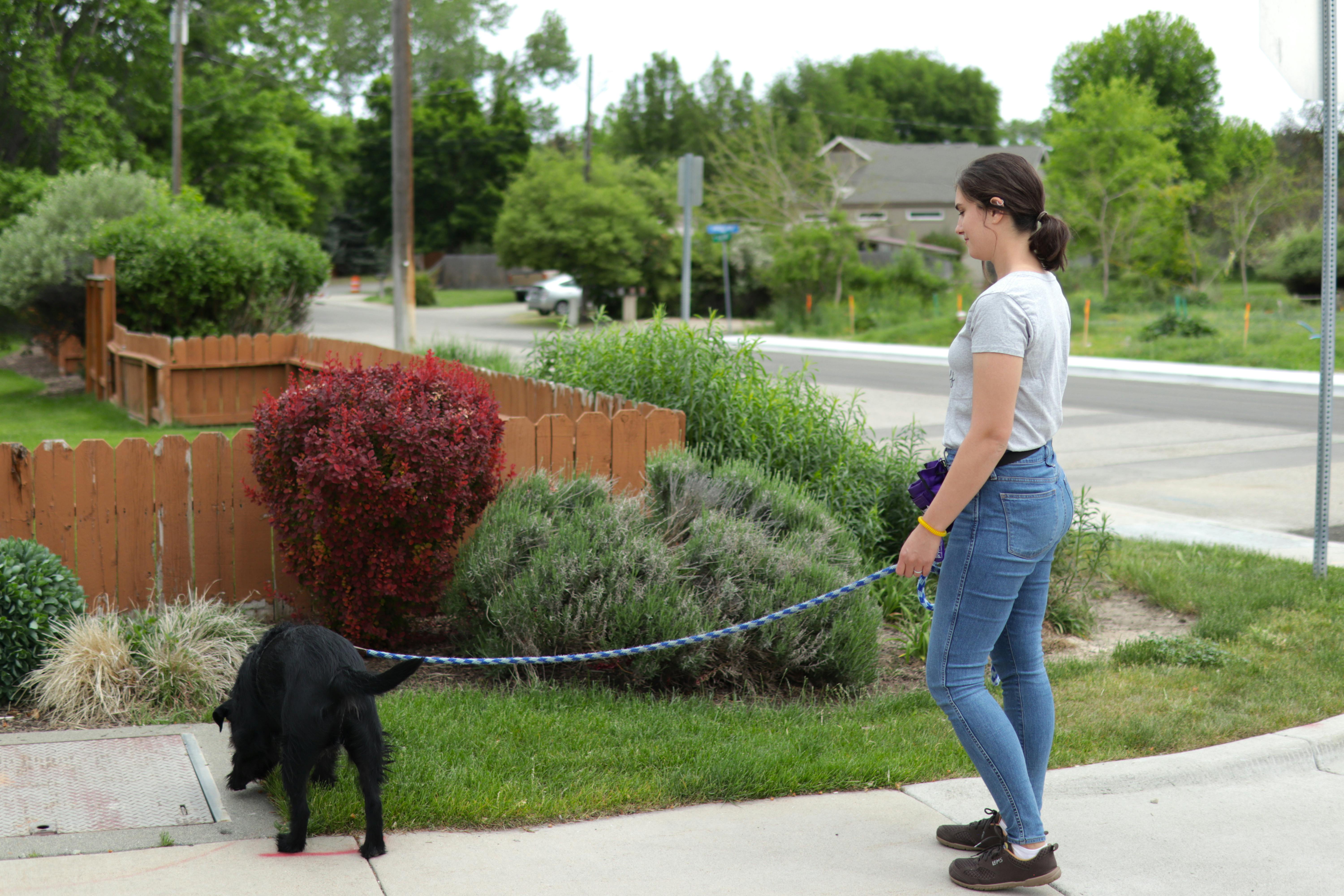
To give you context, my dog is a dog who deals with lots of fear and anxiety, specifically with other dogs. (He’s gotten way better, but he will likely always be uncomfortable with other dogs.) I am married—my husband and I split the dog responsibilities—and do not have any children. My husband and I work primarily from home, though I do work outside the home when working with clients. I’m a professional dog trainer, so I care deeply about dog enrichment, but I’m also human with a busy human life and limitations. And, honestly, sometimes training other peoples’ dogs makes me too tired to train my own. My dog also has a low play drive and does not need the same amount of exercise as other high-drive dogs.
Here’s what my dog’s enrichment plan looks like (with some natural variation):
Daily
- Morning sniffy walk on a 15 foot leash, anywhere from 30 minutes to an hour long depending on the day. This walk is never missed.
- Some kind of mental stimulation, which changes depending on the day. Some days we don’t get to this, but we aim for most days. Our go-tos: Positive reinforcement training for 15 or so minutes, dinner in a cardboard box instead of his food bowl, filling toilet paper rolls with food and hiding them, or scattering treats across the house or in the backyard
- Social play with my husband or me or both of us
- Access to comfortable spaces for napping with a fan or music on (if needed to help block out distracting noises)
Weekly
- A hike or longer walk away from the house. In full disclosure, we don’t always meet this goal every single week.
- Calming activities as needed, including time with his pupsicle, kong, lickimat, or chews
- Games of fetch or other higher-intensity play sessions in the backyard, if he desires.
We also ensure he has optimal nutrition, which I won’t get into here as I am not a veterinarian or dog dietitian.
Remember, this is only an example of what works for my family and dog. If your dog needs more strenuous exercise that might be a daily goal. Or perhaps your dog needs weekly or biweekly time to play with other dogs. Do what works for you and give yourself grace. While we have the responsibility to meet our dog’s needs, we have the responsibility to meet our needs too.
Conclusion
Wrapping up our deep dive into dog enrichment, I want you to remember that enrichment is about so much more than boredom busting. It’s about meeting your dog’s needs. Whether it’s a game with the flirt pole, a challenging food scatter, or creating a relaxing place for your dog to go to for a sense of calm, these activities keep them happy and fulfilled.
If you want to learn more about enrichment, check out Allie Bender and Emily Strong’s book, Canine Enrichment for the Real World or their website, Pet Harmony. Both resources helped inform this post.
Until next time, happy enriching!


